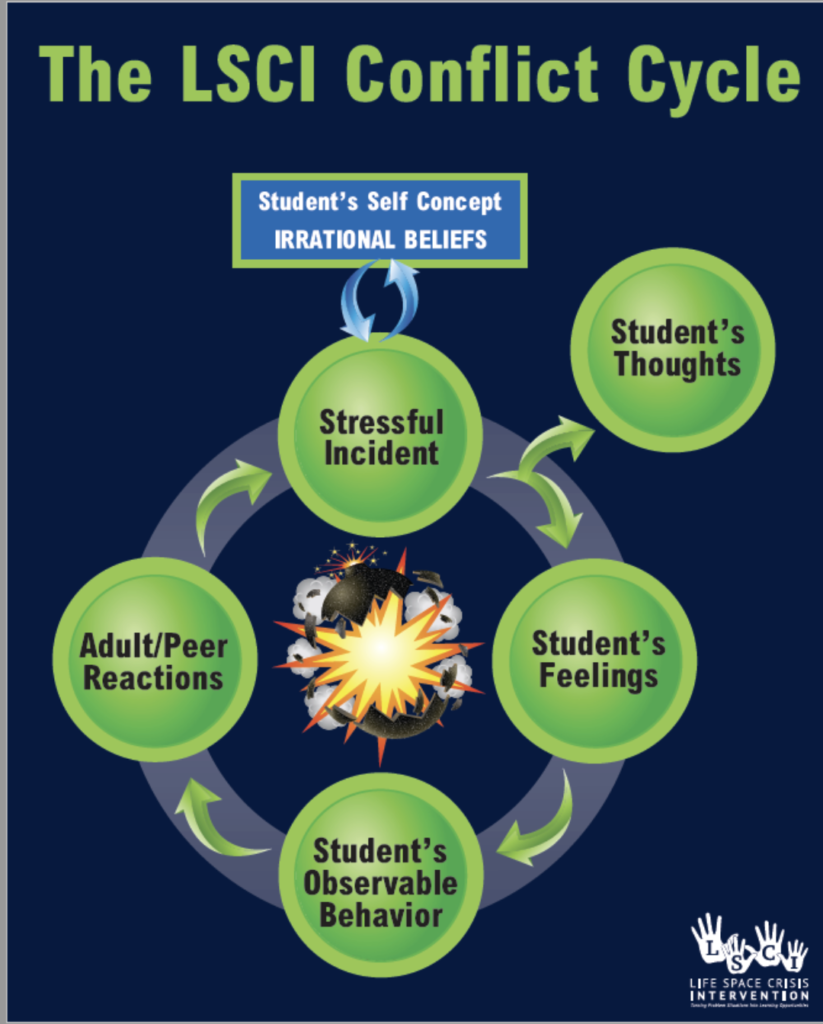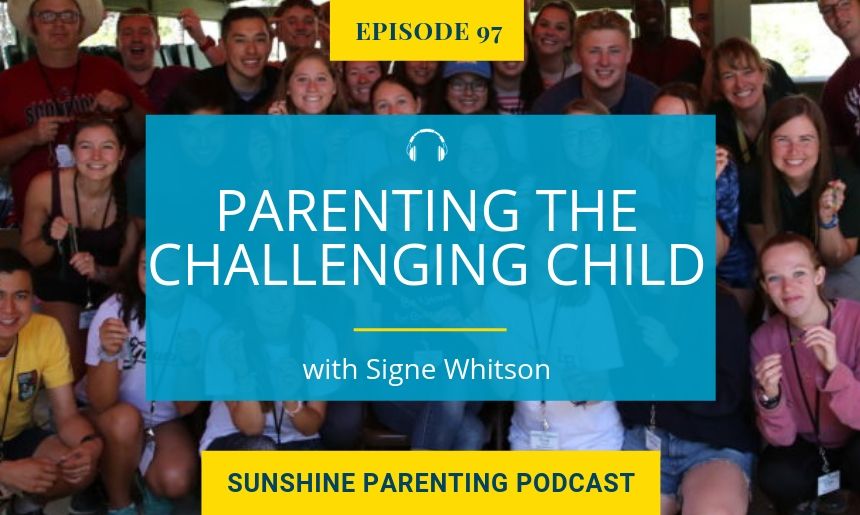
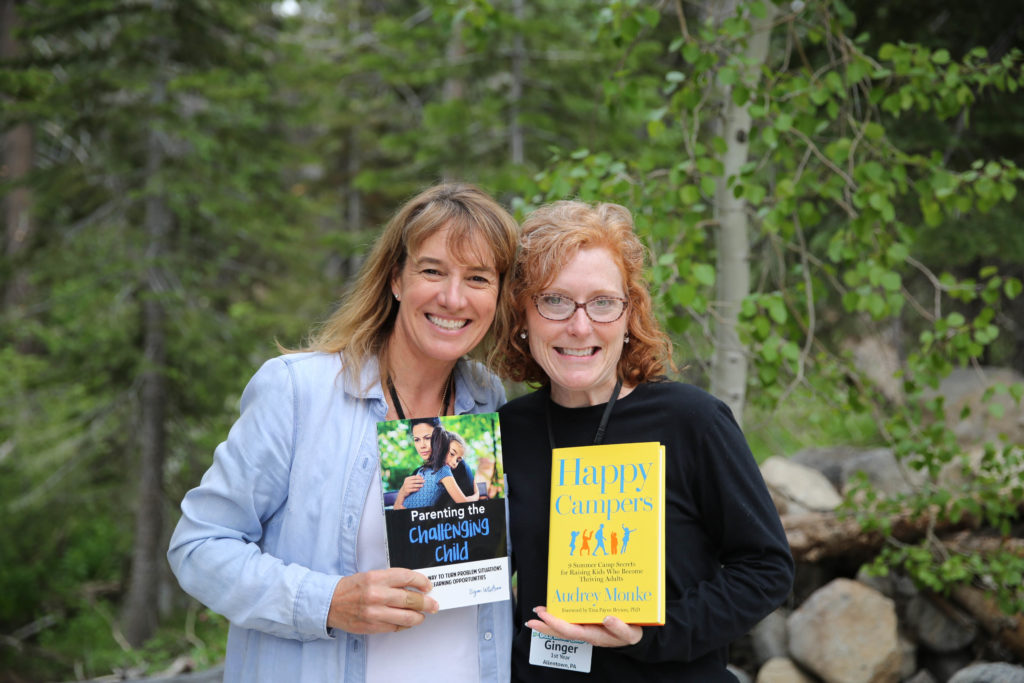
Audrey “Sunshine” Monke and Signe “Ginger” Whitson at camp
In Episode 97, I’m chatting with Signe Whitson. We talk about her book, Parenting The Challenging Child: The Four-Step Way To Turn Problem Situations Into Learning Opportunities, which is based on her work at the Life Space Crisis Intervention, an organization dedicated to training teachers, counselors, and parents on how to appropriately respond to challenging behaviors from kids. The program helps us to better understand the conflict cycle that we can get into with kids when they are exhibiting bad behaviors and how we can help break that cycle.
Previously, in episode 66, I spoke to Signe about her research and article about distinguishing between rude, mean, and bullying behaviors in children.
After Signe’s visit to my camp this summer to do training with our counselors, we now call each other by our camp names, Sunshine and Ginger.
Big Ideas
- One of the most important tools that kids have for calming down is deep breathing.
- Another important tool that kids have for calming down is movement.
- It’s important for parents to be aware that their own kids trigger an emotional response in them that brings about quicker frustration or exhaustion than when they are with someone else’s child.
- LSCI is an approach to working with young people that examines how a child’s thoughts, perceptions, and feelings contribute to their behavior. While it has been used for 30 years to train professionals who work with kids, this book relates the concepts and strategies to help parents learn to help kids:
- to calm their emotional brain during stressful situations and
- to re-engage their thinking brain and problem-solve.
- The Conflict Cycle teaches us that before bad behavior ever occurs with a child, there is a set of thoughts, perceptions, feelings, and reactions from other people that grows within the child and leads to the behavior.
- With problem behavior with kids, we look at the amygdala and the prefrontal cortex of the brain. In stressful situations, the emotional part of the brain loses the ability to connect and communicate with the rational part of the brain and the children’s emotions become dominant.
- Helping kids learn how to regulate their brain is a skill that we can and should be teaching them.
- Kids need adults to role model how to take a breath and handle things rationally and calmly, rather than acting on the emotions of the moment.
Quotes
Ginger: “I hope that this book is very practical for parents in terms of what is the garbage, nonsense behavior that we don’t need to address right away, in the heat of the moment, versus, what needs to be done in a problem situation, and how to do that in a way that actually turns that problem into an opportunity for the relationship to get a little better, for the child to feel heard and understood, for the child to learn how to calm down.”
Ginger: “What the conflict cycle shows is that by the time a problem situation happens, let’s say between a parent and child, the problem itself is all we’re focusing on–the misbehavior, the talking back, the rolled eyes, the thrown bottle–whatever it is. What the conflict cycle teaches us is that before that behavior ever occurred, there was this whole set of thoughts, perceptions, feelings, reactions from other people that grew, and grew, and grew, and led to that behavior.”
Ginger: “If, as adults, we just go in and punish behavior or react to it, what we’re missing is everything inside the child that is important and led up to it. We might be punishing the surface behavior, but it’s bound to happen over again in the future because we didn’t really address its roots.”
Ginger: “To the child, their perception of the event is reality for them. We might see it completely differently, but as we say in the book, ‘to the corkscrew, the knife is crooked’ so the way the child is perceiving that event is real and it is driving this huge, emotional response.”
Ginger: “Learning about the brain science behind behavior has been a total game-changer for me and my career. It takes us away from being angry and frustrated by kid’s repetitive, challenging behaviors, and it takes us to a place of compassion where we understand that they are overwhelmed right now.”
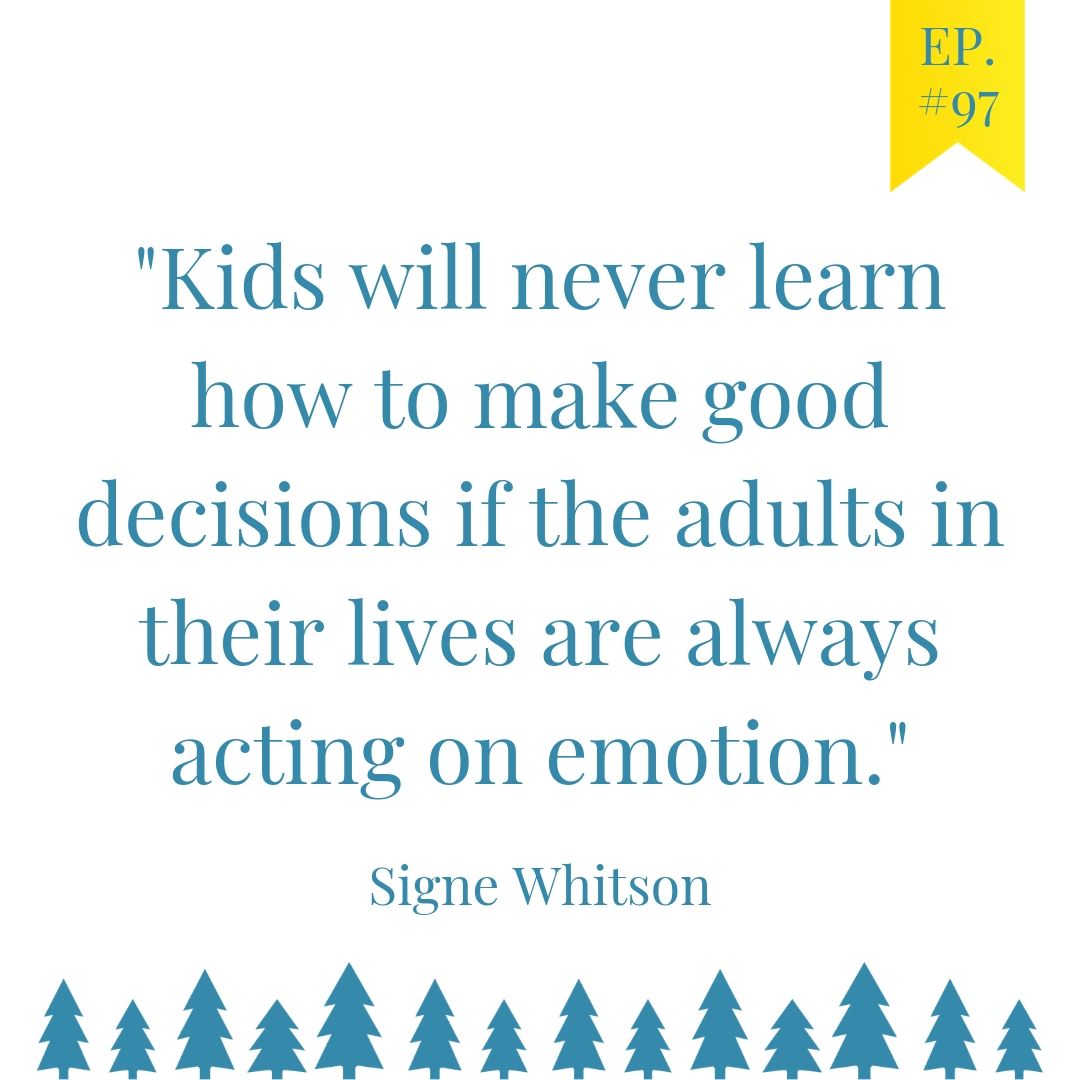
Ginger: “Helping kids learn how to regulate their brain is a skill that we can and should be teaching them.”
Ginger: “Kids perceive things based on their own set of beliefs about themselves, about others, and the world. They have thoughts, feelings, and behaviors related to that set of perceptions. As adults, it really important for us to ask questions and examine those perceptions. Sometimes a child is dead-on and the way they perceive something is exactly right and sometimes not.”
Ginger: “When a child tells you something that sounds awful, don’t freak out. Just listen, let them tell their side of the story. But your face and all of your reactions should convey that whatever they’re telling you is totally manageable. What we project really has an impact on how a child feels going into this problem-solving phase.”
Ginger: “Number one, don’t freak out. Number two, let a child know that you’re sorry for the way they are feeling. Number three, thank kids for sharing what is happening.”
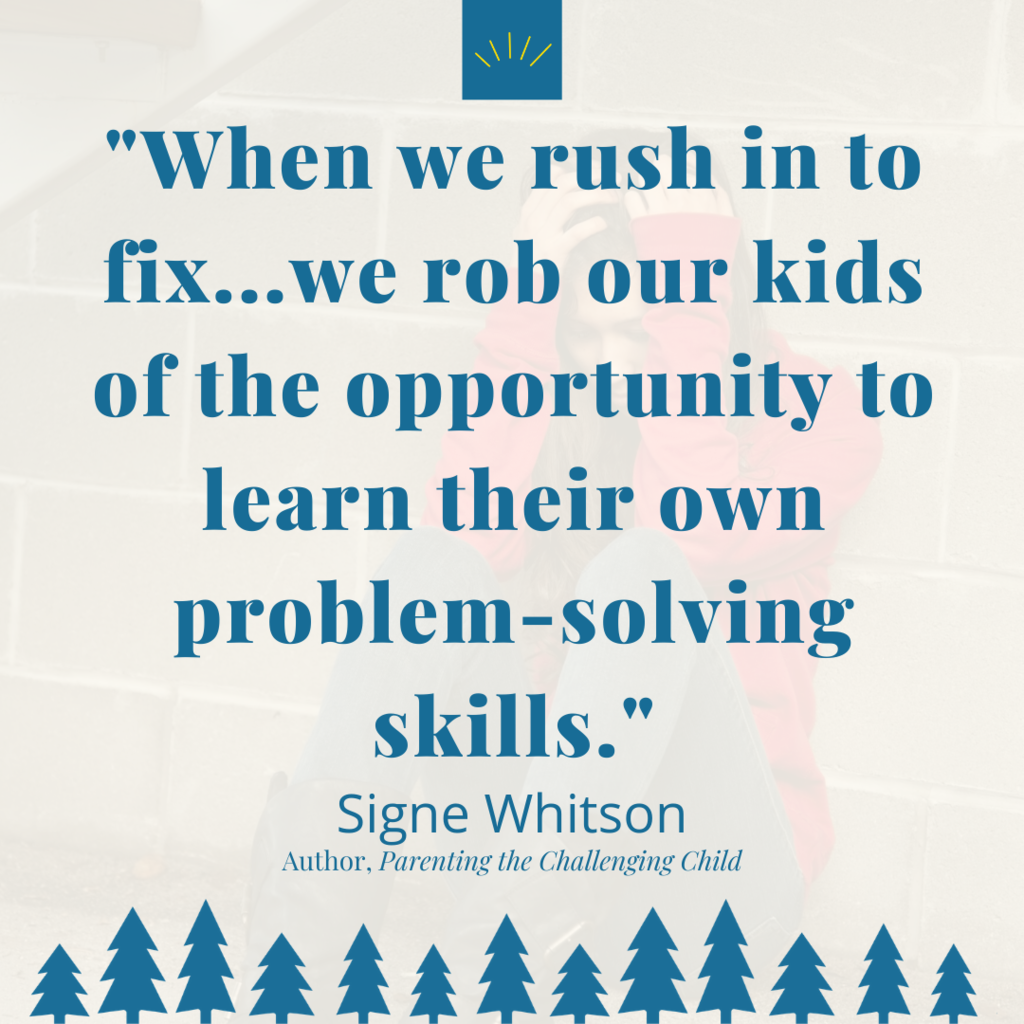
Ginger: “We have to make kids feel like they have agency and power, and there’s something that they can do. They’re not waiting for an adult to rescue them, or another child to change.”
Ginger: “Our emotional brains are wired to protect our kids…but it’s our job to take a breath, to smell some lavender and vanilla, to go for a run, just to take a pause and engage the thinking part of our brain instead of the emotional one. Because most of the time when we make emotionally based decisions, we’re not actually making the best decision. Kids need adults to role model that we can take a breath and handle things rationally and calmly, as opposed to just acting on the emotions of the moment.”
Sunshine: “As kids get older they are exposed to some really crazy, sometimes dark, stuff from other kids and in the world. We want our kids to feel like they can come and talk to us about those things. It’s so important that we stay calm, regardless of how bad it sounds.”
Ginger: “There’s been great research and a study that recently came out asking thousands of young people what is it that you want when you go to your parents. And, overwhelmingly, the kids said, ‘I just want them to listen. I specifically don’t want them to try to solve it. I just want them to listen.’ So we are actually doing them a disservice when we rush in and try to solve. It’s so much better to just listen.”
Ginger: “As parents, we love our kids so much that we just want to fix their problems and make it all better. But first of all, that’s not always what kids want. Second of all, when we rush in to fix it, we rob our kids of the opportunity to learn their own problem-solving skills.”
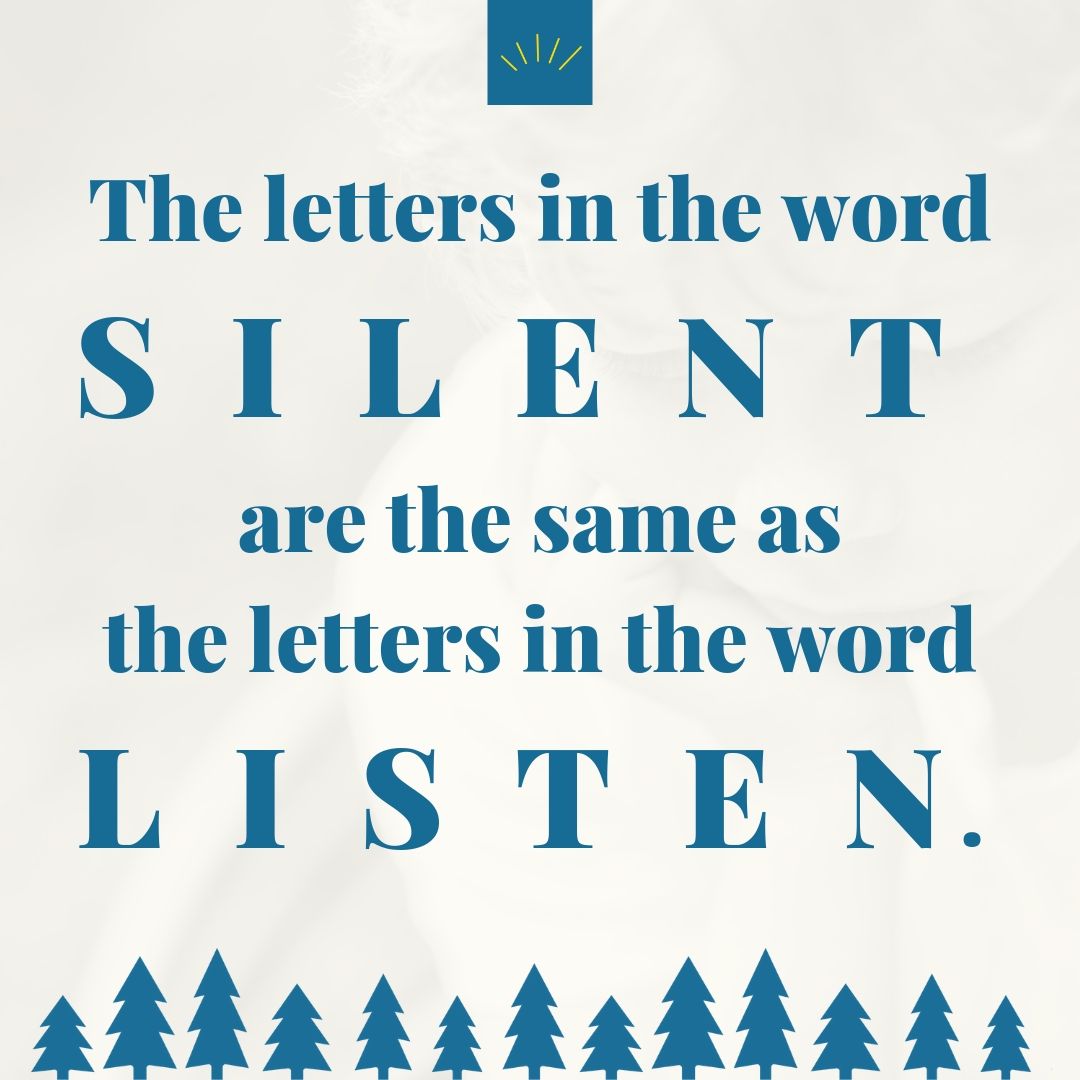
Breathing Beads
Video Tutorial on how to make the “Breathing Beads” Signe and I talked about in this episode. It’s linked from this article on Signe’s website or you watch it below:
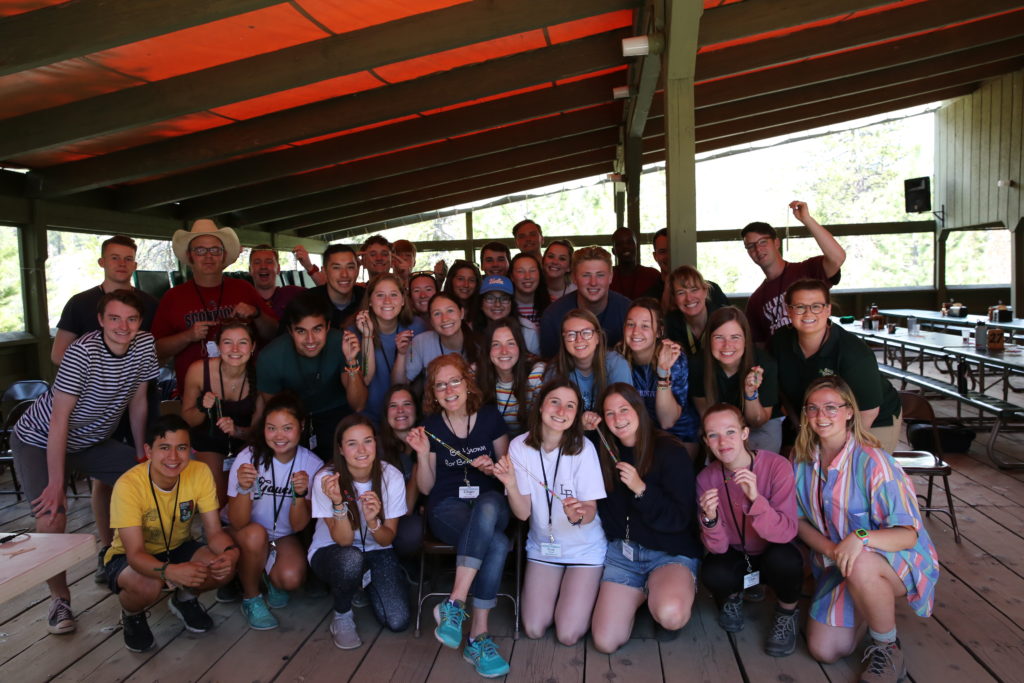
Ginger and Camp Counselors with their Breathing Beads
Images from Parenting the Challenging Child: The 4-Step Way to Turn Problem Situations into Learning Opportunities, by Signe Whitson
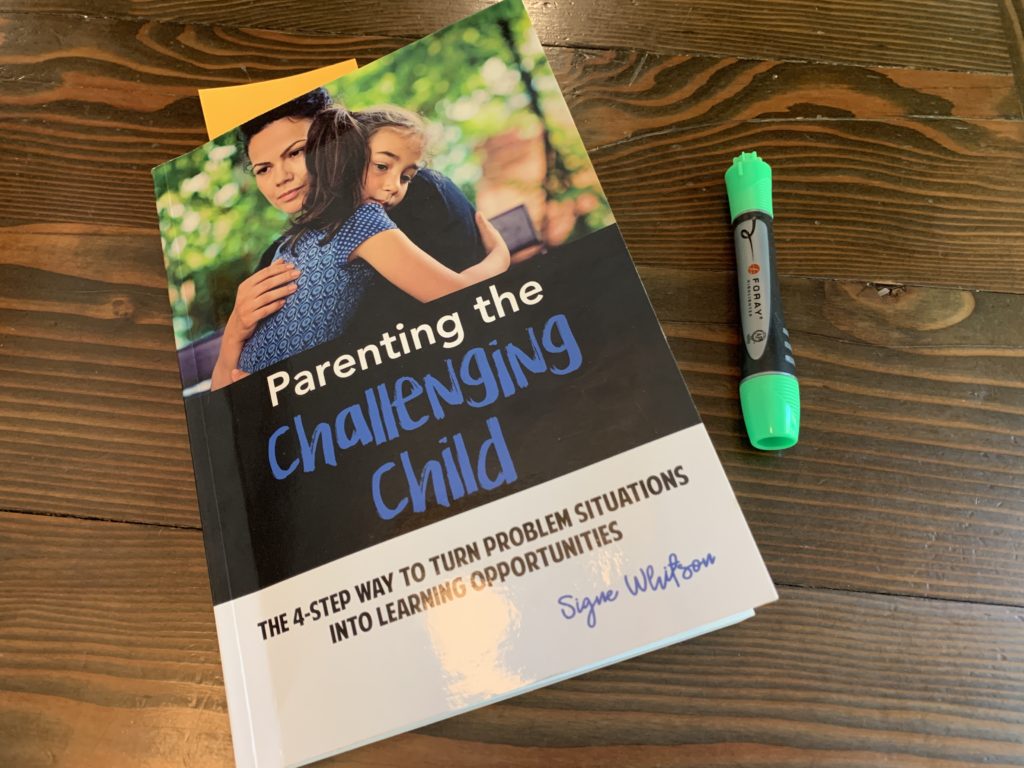
Great questions to ask about children’s perception of stressful events and well as their thoughts, feelings, behaviors, and what they observed in others’ reactions (pages 40-41):
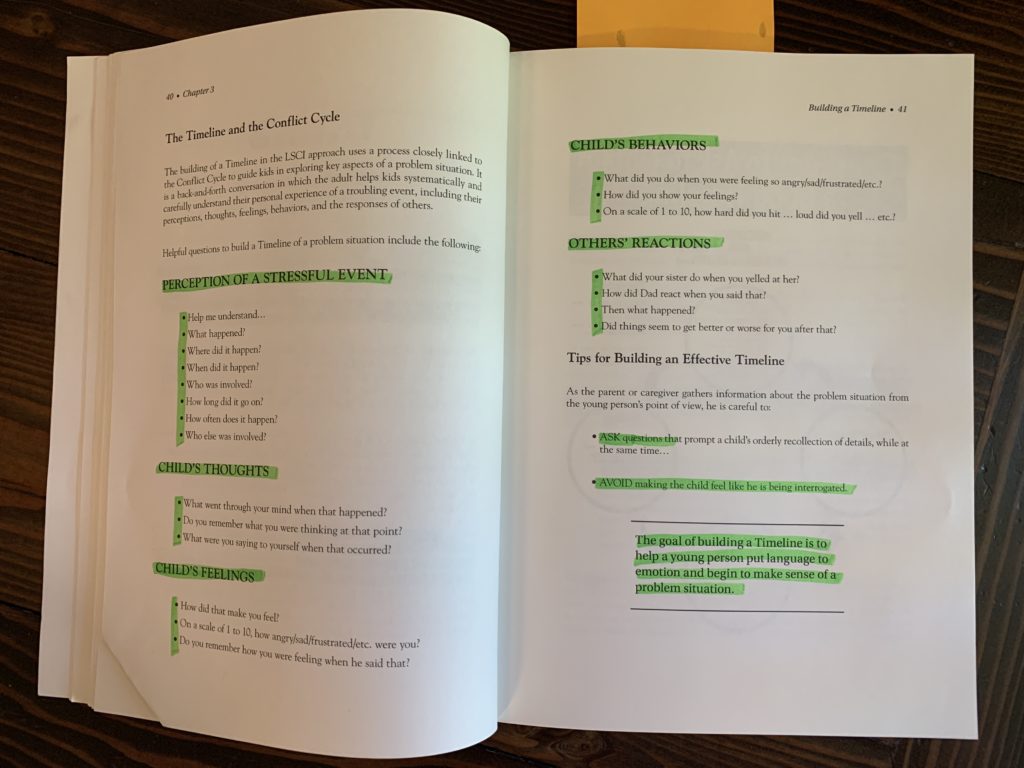
Questions to Ask to Obtain a Good Timeline (about stressful events) (page 42):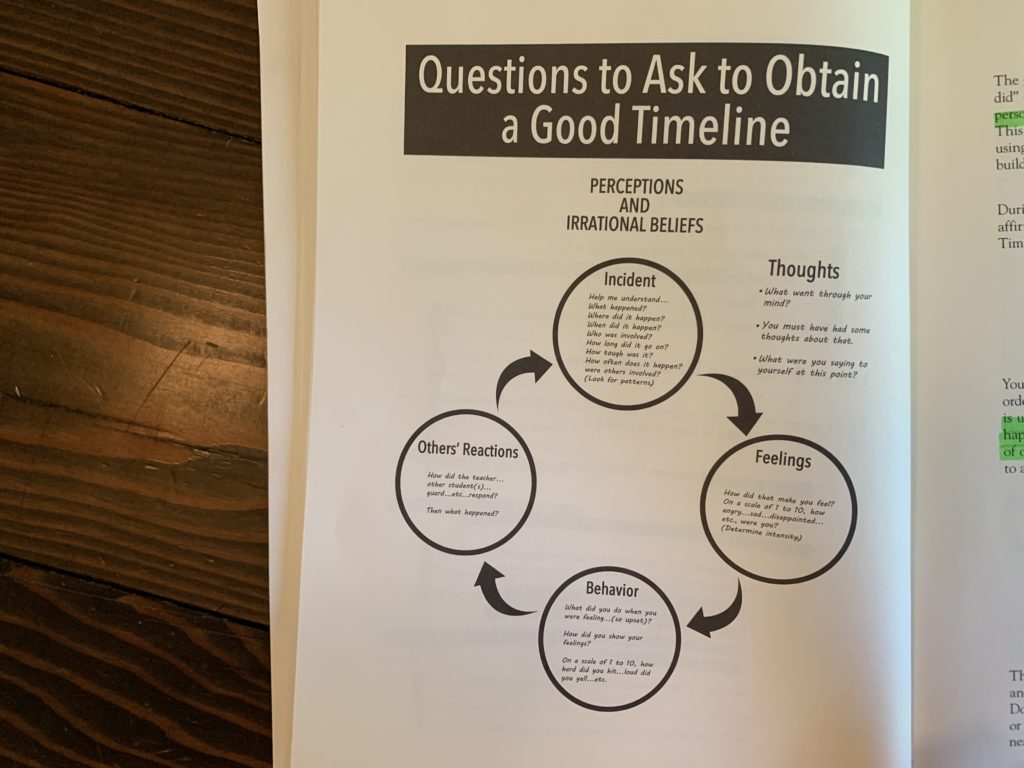
Displacement in an SOS Situation (page 74):
“Displacement is the term used in LSCI training to describe situations in which a person takes his anger out on someone or something other than the actual target of his anger. The displacement of intense, uncomfortable emotions is a common self-defeating behavior among children and adults alike.”
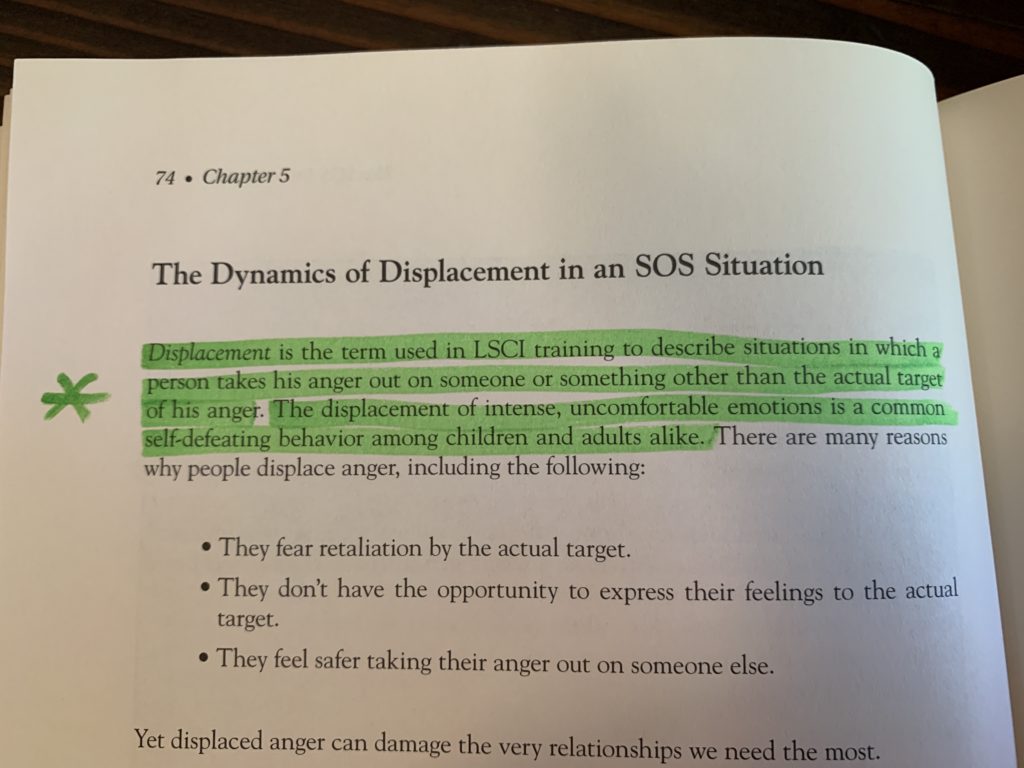
The LSCI Conflict Cycle
“Flipping Your Lid”
Dr. Daniel Siegel’s Hand Model of the Brain:
Resources/Related
Life Space Crisis Intervention (LSCI) Website
Ep. 95: Raising a “YES Brain” Child
Ep. 66: Is it Rude? Is it Mean? or Is it Bullying? with Signe Whitson
Join Audrey for her Summer Read-Along of her new book, Happy Campers: 9 Summer Camp Secrets for Raising Kids Who Become Thriving Adults on the Happy Campers Facebook group this summer, as she goes through one secret per week, each week of July and August. For information about Audrey’s summer read-along of Happy Campers, visit her website at www.happycampersbook.com. While you’re there, click on the Book Hub link for tons of downloadable resources that go along with the book.
You can pick up your copy of Audrey’s book, Happy Campers, 9 Summer Camp Secrets for Raising Kids Who Become Thriving Adults, at Amazon, Barnes & Noble, IndieBound, Books a Million, Kobo, or wherever books are sold.

